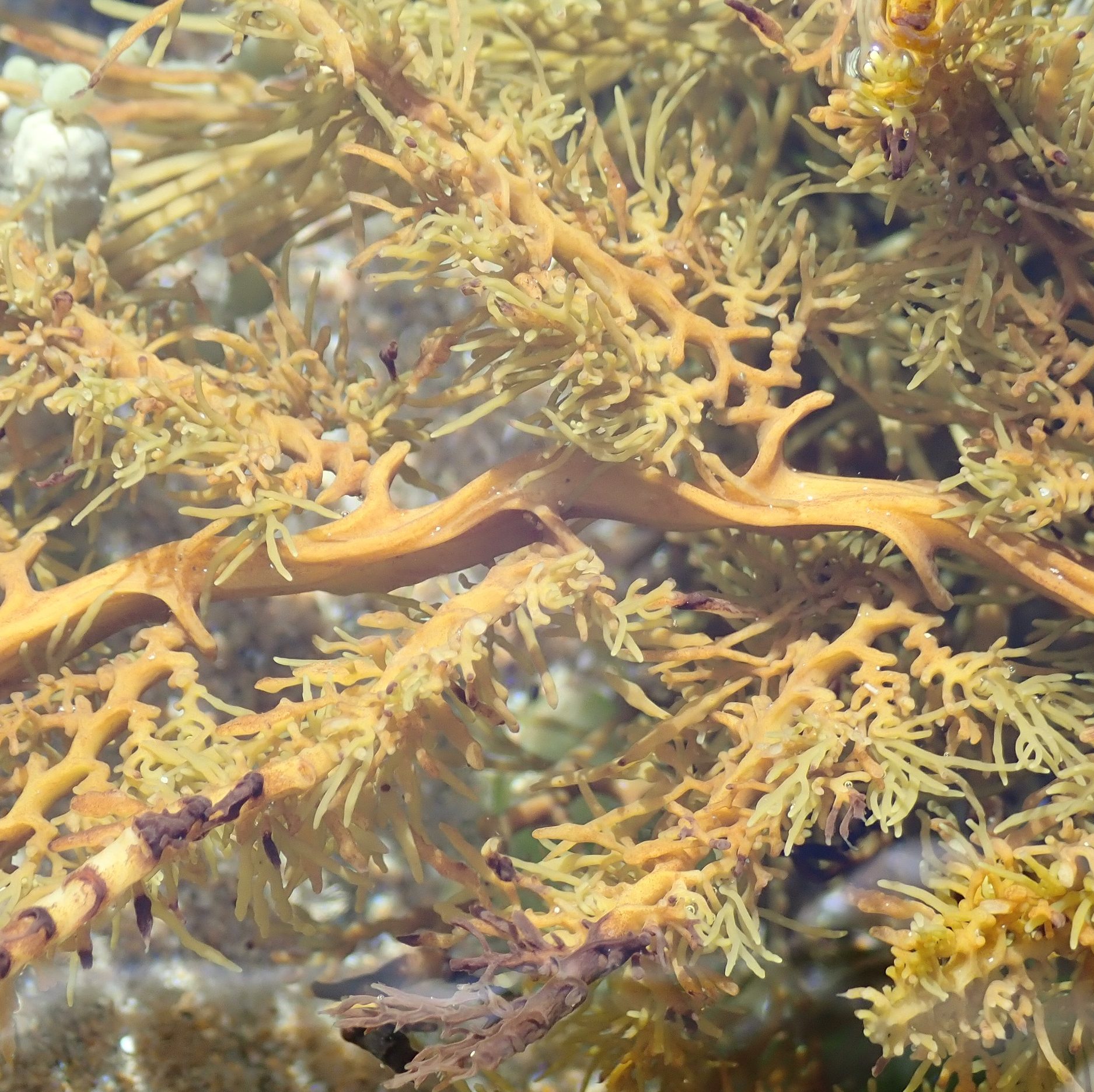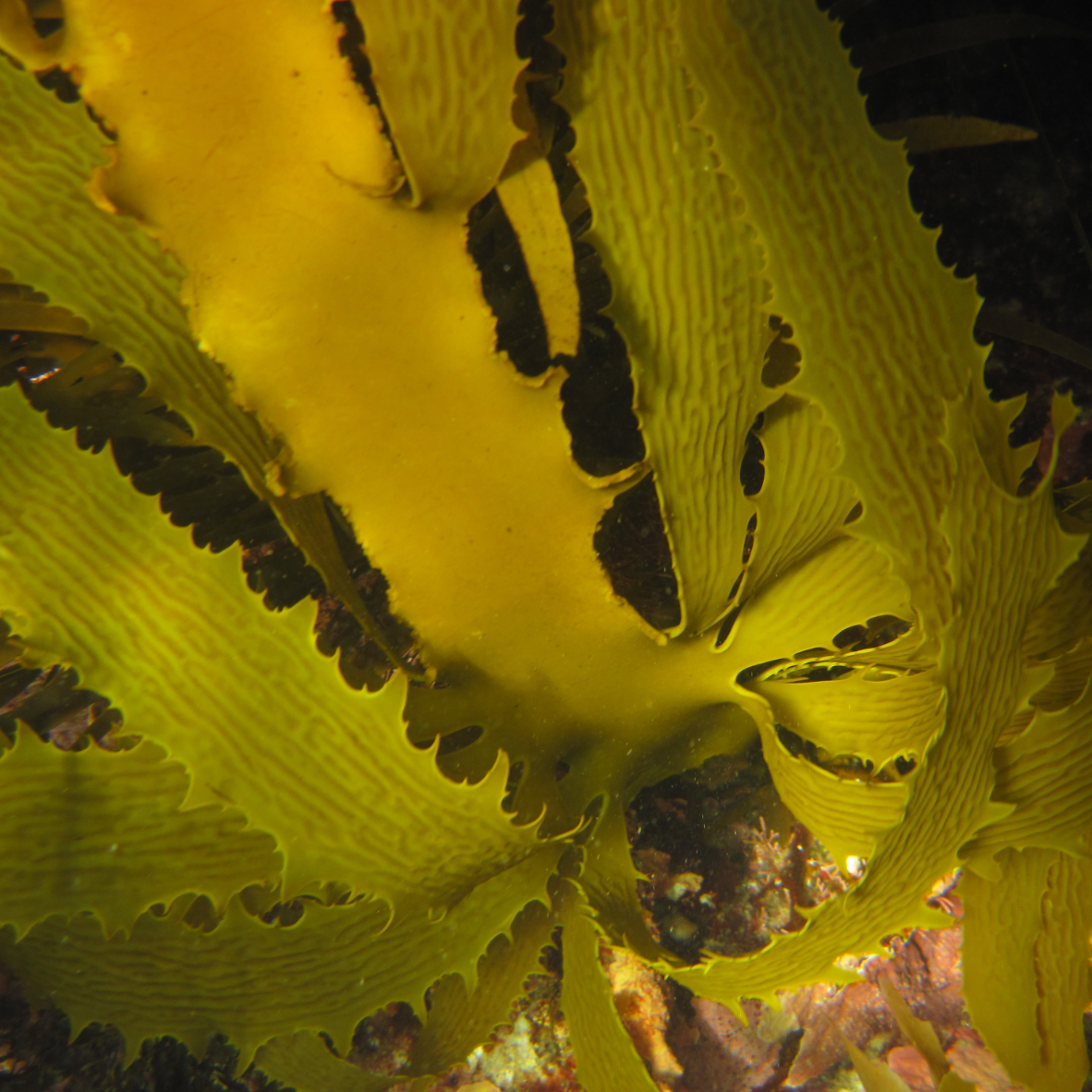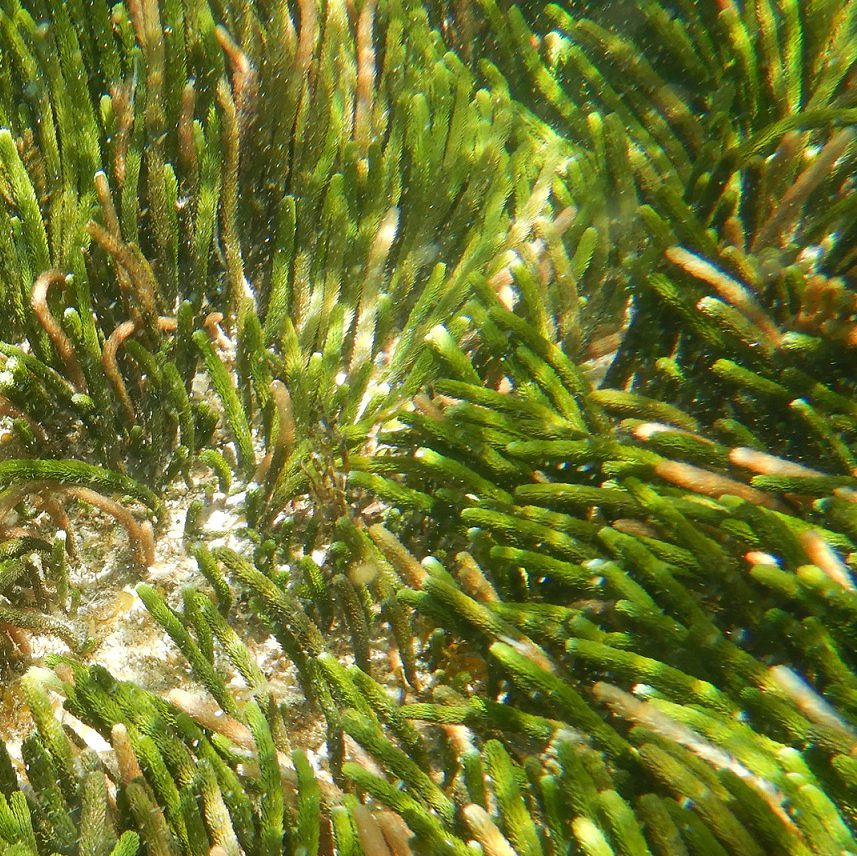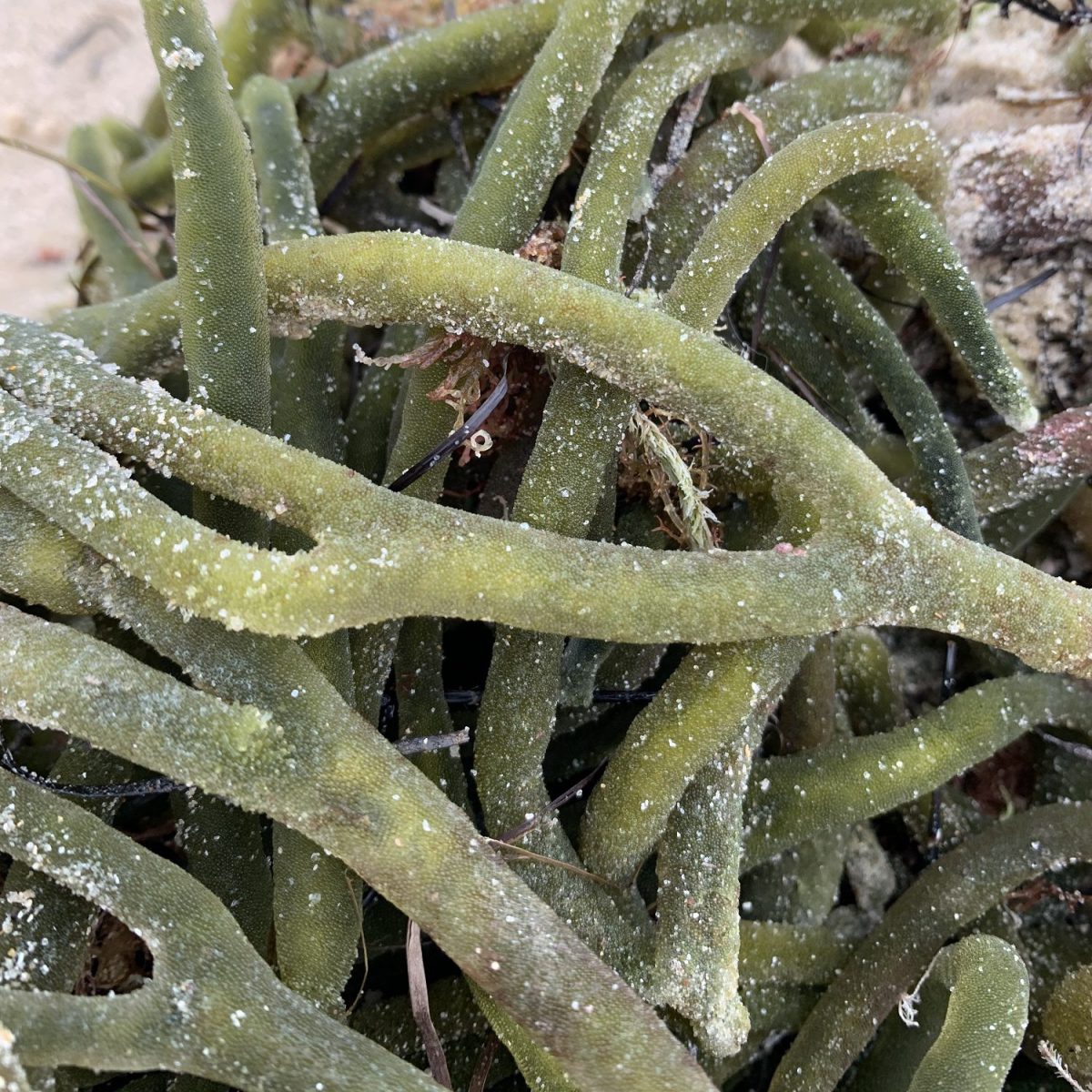
Explore Algae
Algae are a large and diverse group organisms that can photosynthesise and make food using sunlight and simple materials.
Algae all have a relatively simple cell structure and lack the different structures found in true plants such as roots, stems, leaves, and flowers. Water and nutrients are absorbed from the water directly.
Brown Algae
The Brown Algae (Ochrophyta) are the most conspicuous large algae found in the mid to lower intertidal zone and larger rockpools as well as forming extensive kelp forests offshore. Their colour is due to the brown pigment fucoxanthin which combines with green chlorophyll to absorb light and allows these algae to live in deeper waters. There are around 240 species of Brown Algae in southern Australia.
Green Algae
Only about 10% of Green Algae (Chlorophyta) are restricted to marine habitats. There are around 140 species known from southern Australian waters. Generally smaller and less robust than the Brown Algae, they can usually be recognised by their bright, grass-green or darker green colour. They contain the same photosynthetic pigments as land plants and it is thought that all terrestrial plants evolved from Green Algae.
Red Algae
Southern Australia is home to about 800 species of Red Algae (Rhodophyta), making it the most diverse region for Red Algae in the world. Because they contain some additional light absorbing pigments, Red Algae can tolerate lower light levels and some grow in deeper water such as on the floor of a kelp forest or under ledges.
Blue-green Algae
Blue-green Algae are also known as Cyanobacteria and are among the earliest forms of life on earth. Unlike other bacteria they can photosynthesise and use sunlight energy to convert water and carbon dioxide into food and oxygen. Prior to their arrival, there was very little oxygen present in the atmosphere. About 2400 million years ago, the ‘Great Oxidation Event’, initiated by Cyanobacteria, led to the evolution of life as we know it. Blue-green Algae are a significant part of the marine nitrogen cycle and important primary producers in many areas of the ocean, shoreline, and in soils.
Photographers
Andrew Allen (Club-leafed Cystophora)
Bernie Lingham (Crayweed, Darwin’s Bubbles, Flat-lobed Cystophora, Sea Apple, Sea Lettuce)
Jacqui Pocklington (Bushy Cystophora, Open-branched Cystophora, Red Turf Algae)
Mark Rodrigue (Baitweed, Brown’s Caulerpa, Bull Kelp, Fern Caulerpa, Giant Kelp, Golden Kelp, Neptune’s String, Plocamium, Tufted Coralline Algae)
Naomi Wells (Cactus Caulerpa, Dead Man’s Fingers)
Neil Tucker (Encrusting Coralline Algae)
Rebecca Hamdorf (Green Jelly)
Rod Lowther (Neptune’s Necklace)






















